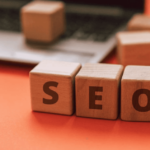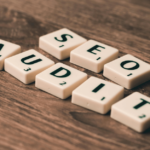With the online world evolving at lightspeed, entrepreneurs and businesses alike are pushing the pedal to the metal, racing to grab attention and drive traffic to their websites. Two approaches jump out as particularly effective. Search Engine Optimization (SEO) and Search Engine Marketing (SEM). Both aim to get your site noticed on search engines, but they do it differently. Imagine making data-driven decisions and driving real growth – that’s exactly what these strategies can do for your business, and we’re about to break it all down.
Understanding SEO
Search Engine Optimization (SEO) is all about increasing your website’s organic search visibility. Unlike paid ads, SEO focuses on earning traffic naturally by creating high-quality content and making technical tweaks to your site. Here’s what you need to know:
Keyword Research
The heart of any good SEO strategy is keyword research. To tap into your target audience, you need to dig up the keywords and phrases they’re actually using in their online searches and then gauge how popular those terms are compared to the competition. Looking for a competitive edge? Turn to tools like Google Keyword Planner, Ahrefs, and SEMrush. They’ll help you uncover hidden keywords with high search volumes and low competition – the perfect combo to drive targeted traffic to your site.
On-Page SEO
Learning how to write for SEO is imperative. Once you have your keywords, it’s time to optimize your website’s pages. This includes:
- Title Tags and Meta Descriptions: Create captivating and keyword-rich titles and descriptions.
- Headers and Content Structure: Use headers (H1, H2, H3) to organize content and improve readability.
- Image Optimization: Add alt tags to images to enhance accessibility and help search engines understand them.
- Internal Linking: Build a robust internal linking structure to help search engines crawl your site efficiently.
Off-Page SEO
Off-page SEO involves activities outside your website that improve your rankings. The main focus is building high-quality backlinks from reputable sites. Strategies include:
- Guest Blogging: Write articles for other websites in your industry to earn backlinks.
- Social Media Engagement: Share your content on different social media platforms to increase visibility and shares.
- Influencer Partnerships: Collaborate with influencers to increase your reach and gain valuable backlinks.
Technical SEO
Technical SEO ensures that your website meets the technical requirements of search engines. Key aspects include:
- Site Speed: Optimize your website to load quickly.
- Mobile-Friendliness: Ensure your site works well on mobile devices.
- Secure Sockets Layer (SSL): Use HTTPS to secure user data.
- XML Sitemaps and Robots.txt: Create and submit sitemaps to guide search engines through your site’s structure.
Understanding SEM
Search Engine Marketing (SEM), also known as paid search, involves promoting your website through paid ads to show up at the top of search engine results. This method is great for quick visibility and traffic. Here are the key elements of SEM:
Keyword Research and Selection
Just like SEO, SEM starts with keyword research. However, here, the focus is on keywords that offer the best return on investment (ROI). Google Ads Keyword Planner is a fantastic tool for this process, helping you find high-demand keywords with manageable competition.
Crafting Compelling Ad Copy
Compelling ad copy is crucial in SEM. Your ads must be concise, engaging, and relevant to the user’s search query. Google Ads allows for three 30-character headlines and two 90-character descriptions, which should be used strategically to attract clicks.
Bidding Strategies
SEM involves bidding on keywords to secure ad placements. Various bidding strategies include:
- Cost-Per-Click (CPC): Pay each time someone clicks on your ad.
- Cost-Per-Thousand Impressions (CPM): Pay based on the number of impressions your ad receives.
- Enhanced CPC: Let Google automatically adjust your bids based on the likelihood of a conversion.
Targeting and Quality Score
Target specific demographics, locations, and devices to maximize your SEM campaigns. Google’s Quality Score, which rates the relevance of your ads, keywords, and landing pages, is vital in determining your ad placements and cost per click. A greater Quality Score can lead to lower costs and better ad positions.
Benefits of SEO and SEM
Both SEO and SEM offer unique benefits that complement each other when integrated into a cohesive marketing strategy.
Benefits of SEO
- Long-Term Results: SEO provides sustainable results that can continue to generate traffic long after initial efforts.
- Cost-Effective: SEO requires time and effort but not ongoing ad spend.
- Trust and Credibility: Users often see Organic listings as more trustworthy.
- Higher Click-Through Rates (CTR): Organic search results usually have higher CTRs than paid ads.
Choosing the best SEO strategies is crucial for achieving these benefits. Businesses can significantly improve their organic search visibility by focusing on high-quality content, technical optimizations, and strategic keyword usage. Additionally, leveraging advanced tools and analytics to refine these strategies ensures continuous improvement and sustainable growth.
Benefits of SEM
- Immediate Results: SEM can drive traffic to your site as soon as your ads go live.
- Controlled Budgeting: You can control your spending and adjust your budget based on performance.
- Targeted Advertising: SEM allows precise targeting to reach specific audiences.
- Easy to Measure and Optimize: SEM provides detailed metrics to track performance and make data-driven decisions.
Integrating SEO and SEM for Maximum Impact
Combining SEO and SEM strategies can be highly effective for businesses looking to improve their online presence. Here’s how to integrate both approaches:
Short-Term and Long-Term Balance
While your SEO efforts build a solid foundation for long-term growth, SEM can provide the immediate visibility you need. This unique dual approach ensures a steady stream of traffic from both organic and paid sources.
Data-Driven Insights
Use the data from your SEM campaigns to inform your SEO strategy. The keywords and ad copy that perform well in paid search can guide your content creation and optimization efforts. Nowadays, there are different ways to leverage AI for SEO, too.
Budget Allocation
Allot your marketing budget based on your business goals and current market conditions. Investing more in SEM can provide the quick results you need to launch a new product or target a competitive keyword.
Continuous Improvement
Both SEO and SEM require ongoing monitoring and optimization. Regularly check your analytics to identify opportunities for improvement and adapt your strategies accordingly.
Conclusion
In the debate of SEO vs. SEM, the best choice for your business often lies in a balanced approach. Two strategies are better than one. When you combine these two methods, you’ll see a noticeable spike in website visitors – and, eventually, revenue. Suppose you want to create a marketing plan that meets and exceeds your business goals. In that case, it’s essential to isolate the most crucial aspects of each strategy, combine them in a way that makes sense, and presto! You’ll be left with a plan that leapfrogs the competition.





